Detailed graphics in a recent report on the UK’s research performance have shown which countries have the most “rounded” profiles when it comes to the subjects studied by scholars.
The spider charts, featured in International comparative performance of the UK research base, a study commissioned by the UK government from journal publisher Elsevier, illustrate for several nations how research activity was split by different fields compared with the world average in three different years: 2006, 2010 and 2014.
According to the graphics, the US appears to have the most rounded profile of major research nations, although this is partly because the country has the biggest share of total global research output, making it more likely to have a profile similar to the world average.
However, other major nations in terms of research output (such as China, which has the second largest share of global output to the US) do not have such a rounded profile while smaller nations, such as Canada, do have well-rounded graphs.
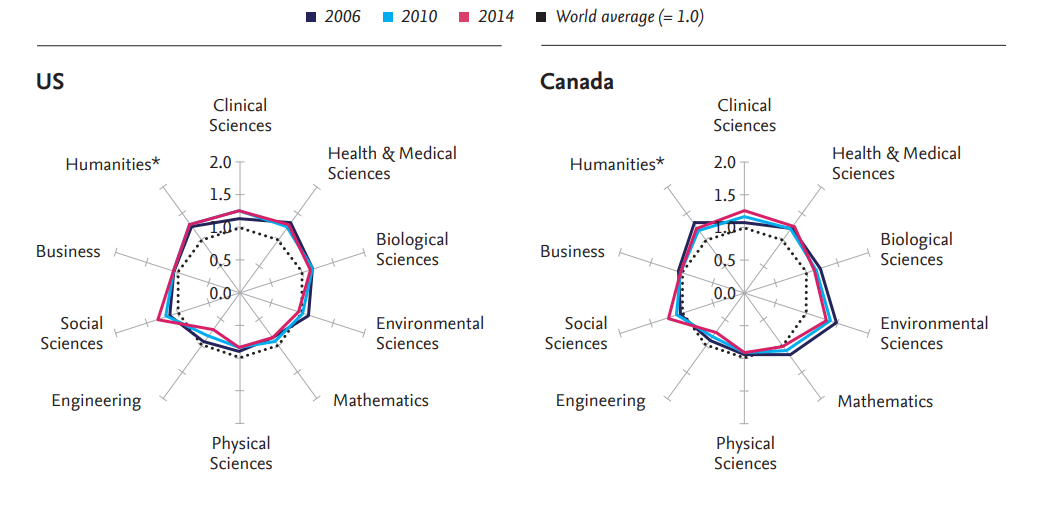
Charts show “activity index” for various countries. This is defined as a country’s share of its total article output across subject field(s) relative to the global share of articles in the same field(s). A value of 1 therefore indicates that a country’s research activity in a field corresponds exactly with the global activity in that field; higher than 1 implies a greater emphasis, while lower than 1 suggests a lesser focus.
The charts show the major concentration that China has on applied science fields such as engineering (which represents more than 1.5 times the world average in terms of the share of its overall output) and how relatively little scholarship it has in the humanities and social sciences.
India too conducts a relatively small share of its research in the humanities and social sciences, but concentrates more on the environmental and biological sciences compared with China (although the countries have been moving towards each other in these areas over time).
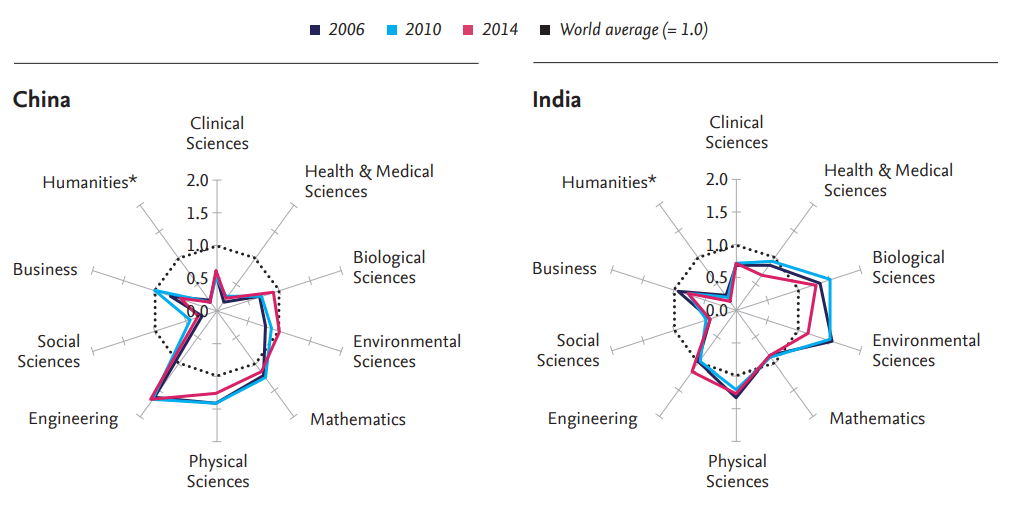
Meanwhile, the graphs also show how South Korea’s research profile has been shifting over time from a relatively larger focus on scholarship in engineering, physical sciences and maths (similar to China) towards a much greater concentration on the life sciences. Another country that has seen an interesting movement over the period is Russia, where there has been an increasing share, relative to the world average, in humanities, social science and business research.
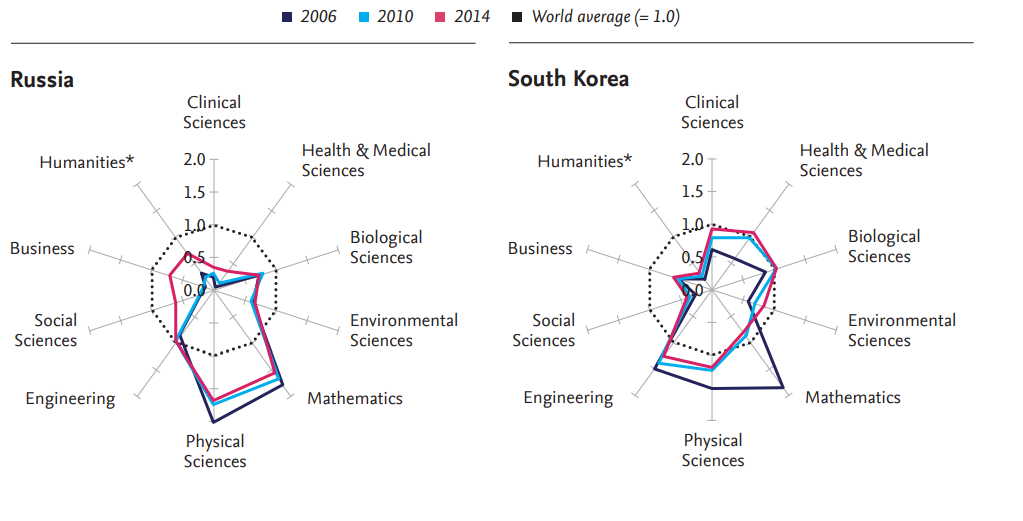
Other countries in which research profiles seem highly skewed towards different disciplines are Japan (low in humanities and social sciences, high in clinical and physical sciences) and Brazil (a much larger focus on life sciences than other areas relative to the global average).
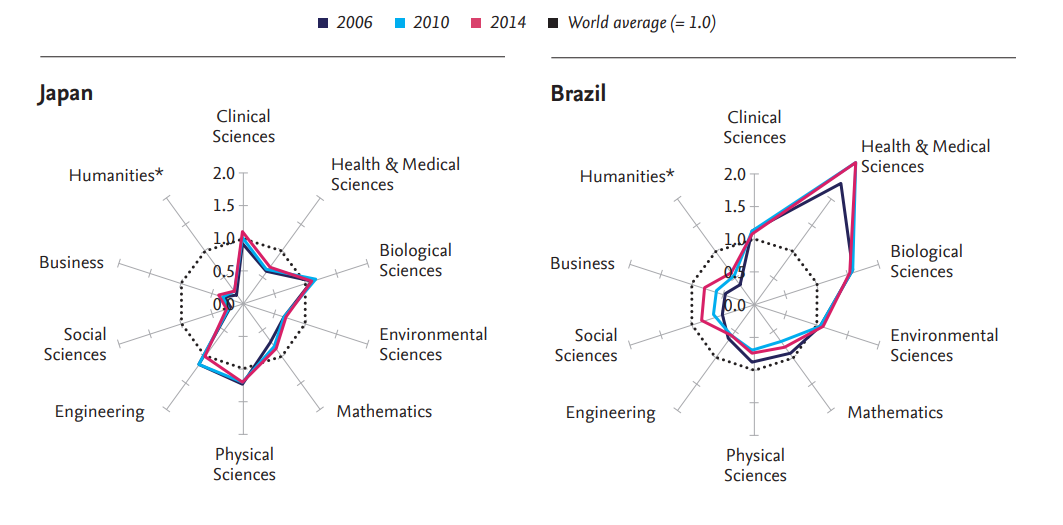
Meanwhile, in Europe, research profiles are more rounded, although not as much as in North America.
The UK has a relatively strong focus on social sciences and humanities, but also in clinical science, while only in engineering, physical sciences and maths is the share of research activity below the world average. Italy and France have their biggest focus on maths while, of the European nations featured in the graphic, Germany has the closest profile to the global average.
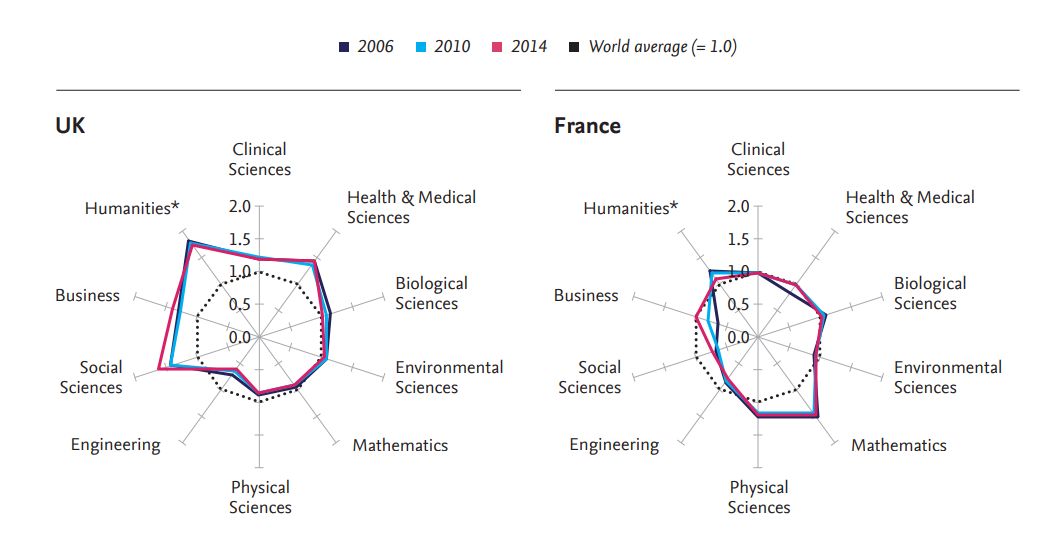
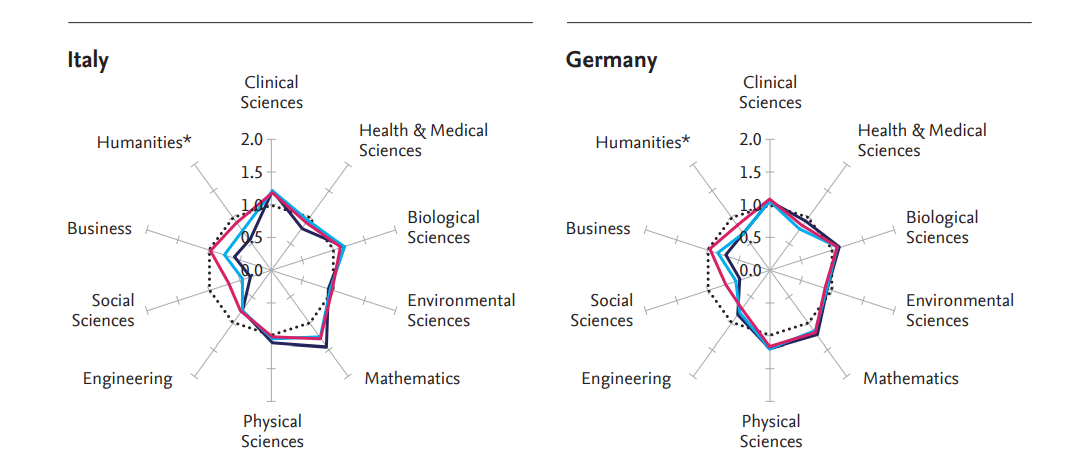
Find out more about THE DataPoints
THE DataPoints is designed with the forward-looking and growth-minded institution in view




